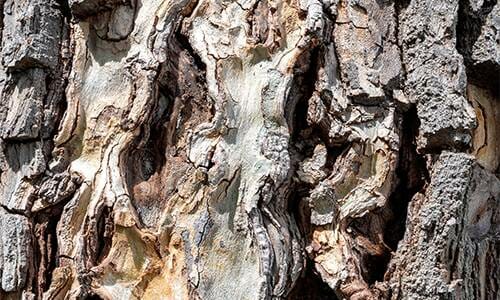

1. Different definitions
1.1 Natural resin
It refers to the amorphous organic substances obtained from plant and animal secretions in nature, such as rosin, amber, shellac, etc. Mainly from plant exudate (secretion) of amorphous semi-solid or solid organic matter. When heated, it becomes soft and melts, and has the tendency to flow under stress.
The basic components of the resin can be divided into three major categories.
① Pure resin, i.e. resinous substance composed of terpenes and crude essential oil. Generally insoluble in water, but soluble in organic solvents, such as rosin, etc.
② Gum resin or gum resin is composed of polysaccharides, soluble in water or swollen in water, but insoluble in alcohols and organic solvents, such as frankincense, etc.
③Oleoresin-containing or gum resin is a resin that contains more essential oil and can be dissolved in oil. According to the history of resin formation, it can be divided into fossil resin, semi-fossil resin, and fresh resin.
The latter is an important source of natural resins. Some natural resins are named by the name of the port where they were first collected and exported.
1.2 Synthetic Resins
ASTM D883-65T defines a synthetic resin as a solid, semi-solid, or pseudo (quasi) solid organic substance of unbounded molecular weight but often of high molecular weight, with a tendency to flow when stressed, often with a softening or melting range and shell-like when broken.
There are polymerization and condensation type synthetic resins according to the synthetic reaction characteristics. In practice, they are often divided into thermoplastic and thermosetting resins according to their thermal behavior.
There are abundant sources of raw materials for the production of synthetic resins, mainly coal tar products and calcium carbide acetylene in the early days, but now mostly products of petroleum and natural gas, such as ethylene, propylene, benzene, formaldehyde, and urea.
The production method of synthetic resin adopts ontology polymerization, suspension polymerization, emulsion polymerization, solution polymerization, melt polymerization, and interfacial polycondensation, etc.
2. Different sources
Natural resins mainly come from plant exudates (secretion) of amorphous semi-solid or solid organic matter.
Synthetic resin is a class of polymer synthesized by man.
3. Different characteristics
Natural resins become soft when heated and can be melted, and have the tendency to flow under stress, generally insoluble in water, but soluble in alcohols, ethers, ketones, and other organic solvents.
There is a wide variety of these substances, mainly rosin, lacquer, amber, and amber resin from plants. It is the secretion of purple gum worms.
Synthetic resins are viscous liquids or solids that can be softened when heated, and usually have a range of melting or softening temperatures when heated. The most important application of synthetic resins in the manufacture of plastics.
Share this:
- Click to share on Twitter (Opens in new window)
- Click to share on Facebook (Opens in new window)
- Click to share on Pinterest (Opens in new window)
- Click to share on WhatsApp (Opens in new window)
- Click to share on Telegram (Opens in new window)
- Click to share on LinkedIn (Opens in new window)
- Click to share on Reddit (Opens in new window)
- Click to share on Pocket (Opens in new window)
- Click to share on Tumblr (Opens in new window)
- Click to print (Opens in new window)

